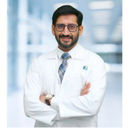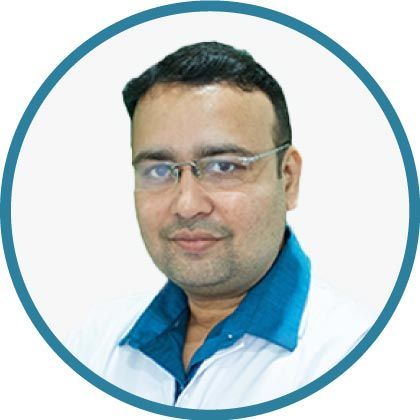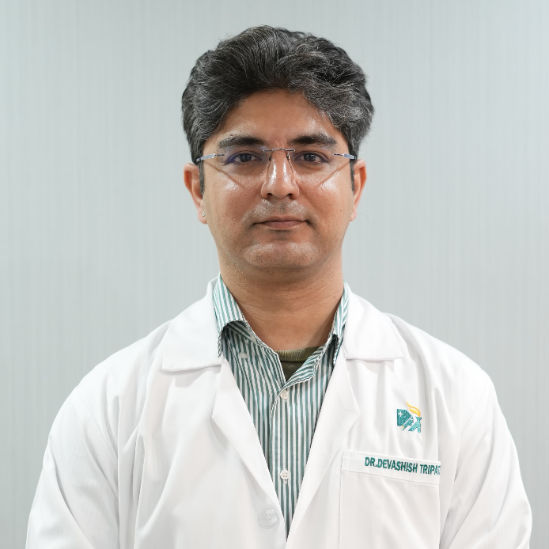Cancer Incidence By Age
Explore how age influences cancer risk, incidence trends, treatments, and prevention strategies across different age groups globally.

Written by
Last updated on 3rd Jul, 2025
Cancer refers to a group of diseases characterised by the uncontrolled growth and spread of abnormal cells. These cells can spread to surrounding tissues and metastasise to other areas of the body, leading to life-threatening complications. Cancer is a very heterogeneous disease; there are more than 100 known types, and each type has distinct risk factors, behaviours, and treatments.
These trends in cancer incidence urgently convey an unmistakable relationship between age and disease occurrence. In fact, age is one of the most common risk factors for cancer, and while it can develop at any age, the risk of cancer generally increases as one gets older. Global data show a conspicuous increase in cancer diagnoses in older adults, while particular cancers like leukaemia disproportionately appear in younger demographics.
This article covers the intricate interconnections between age and cancer in terms of impact on incidence trends, biological mechanisms, conditions of age-specific cancer types, and tailored prevention and treatment strategies.
Age as a Risk Factor
Age brings a wave of cumulative exposures and biological change, and it is one of the strongest risk factors for cancer. Understanding the way in which age influences the development of cancers provides important clues in tackling the disease and helps in both prevention and management.
1. Why age matters in cancer incidence
Age-related cancer risk is influenced by exposure to carcinogens such as tobacco smoke, ultraviolet radiation, and environmental toxins over the decades. Over time, the accumulation of genetic mutations increases the chance of malignant transformation. Additionally, the immune system’s efficiency declines with age, impairing its ability to detect and eliminate abnormal cells. In younger populations, however, cancer is more often linked to inherited genetic mutations or developmental abnormalities rather than environmental exposures.
2. Biological mechanisms linking age and cancer
Biological mechanisms connecting age and cancer encompass DNA damage, DNA repair mechanisms becoming less efficient, and cellular senescence. Ageing tissues also experience chronic inflammation and epigenetic changes, creating an environment conducive to tumour development. These processes highlight the fundamental connection between ageing and susceptibility to cancer.
Age Distribution of Different Cancer Types
Different age groups exhibit distinct patterns in cancer incidence, reflecting variations in genetic predispositions, environmental exposures, and lifestyle factors.
1. Common cancers in children and adolescents
Paediatric cancers, in general, are also fundamentally different from adult cancers and often arise from genetic or developmental factors. The most prevalent types of cancers in this demographic are:
Leukaemia: The most prevalent cancer in children, particularly acute lymphoblastic leukaemia
Brain and Central Nervous System (CNS) tumours: These include medulloblastomas and gliomas, which are more common in younger children.
Lymphomas: Hodgkin and non-Hodgkin lymphomas are frequently observed in adolescents.
Bone cancers: Osteosarcoma and Ewing sarcoma are more common in teenagers, often affecting long bones.
Neuroblastoma: Primarily affects infants and young children, originating in nerve tissue.
2. Cancer types prevalent in middle-aged adults
In middle-aged adults, cancers are attributed more to lifestyle, environmental exposures, and hormonal changes. Common cancers in this age group include:
Breast cancer: Often linked to hormonal fluxes and family history, particularly in women aged 40–60.
Colorectal cancer: Frequently associated with dietary habits, obesity, and physical inactivity.
Lung cancer: Strongly tied to smoking and exposure to air pollutants.
Cervical cancer: A significant risk in women due to human papillomavirus (HPV) infection.
Melanoma: Sun exposure and skin damage increase the risk of this skin cancer in middle-aged adults.
3. Cancer trends in older populations
Due to age-related biological changes, older adults have the highest cancer incidence. Common cancers within this population include:
Prostate cancer: This is one of the most common cancers found in men, and although it is usually slow-growing, it can be prevalent in men aged over 65.
Lung cancer: Cumulative tobacco exposure contributes significantly to its high incidence in older adults.
Colorectal cancer: Commonly diagnosed in patients over 60 years of age owing to lifestyle factors over many years.
Pancreatic cancer: More common in older people and usually diagnosed late and with an unfavourable prognosis.
Factors Contributing to Age-Specific Cancer Incidence
Several factors contribute to the variation in cancer incidence across different age groups, ranging from genetic predispositions to environmental and lifestyle influences.
1. Genetic predispositions
Inherited mutations, like those in the BRCA1 and BRCA2 genes, can predispose some individuals to certain cancers, such as breast cancer and ovarian cancer, at a younger age. In children, genetic syndromes that are often inherited (e.g., Li-Fraumeni syndrome) account for a significant role in cancer development.
2. Environmental and lifestyle influences
Environmental exposures to carcinogenic components in tobacco smoke and ultraviolet radiation become significant over time, leading to an increased risk of cancer in adults and the elderly population. Cancer risk is also heavily influenced by lifestyle factors, such as diet, excess alcohol consumption, and physical inactivity.
Treatment Considerations Across Age Groups
Differences in physiology and response among age groups necessitate personalised treatment approaches for cancer. These strategies seek to deliver impact while maximising safety, ensuring that treatments address the specific challenges faced by each group.
1. Pediatric cancer treatment approaches
Children with cancer require specialised care tailored to their growth and long-term health. Treatments such as chemotherapy, surgery and radiation are meticulously calibrated to avoid side effects and developmental risks. Chemotherapy is capable of killing quickly growing cancer cells, while surgery primarily focuses on removing tumours while preserving vital organ function. This process uses radiation conservatively to avoid long-term complications.
2. Treatment strategies for elderly cancer patients
In older patients, treatment plans must consider comorbidities, frailty, and diminished organ function. Geriatric oncology focuses on weighing the effectiveness of treatment against the quality of life and typically includes more pragmatic approaches like hormone therapy and palliative care.
Preventive Measures and Lifestyle Changes
Tailored prevention strategies can help reduce cancer risk across all age groups, emphasising healthy behaviours and proactive interventions
1. Tailoring prevention strategies to age groups
Preventive measures should be age-specific, such as promoting HPV vaccination in adolescents, encouraging regular screenings for middle-aged adults, and supporting healthy lifestyles in older populations. Personalised prevention strategies can significantly reduce cancer risk and improve outcomes.
2. Role of vaccination and early education
Vaccination programs (e.g., HPV, hepatitis B) are important in cancer prevention in younger populations. Teaching healthy behaviours such as quitting smoking and eating a balanced diet early in life can help them understand the disease better and reduce the risk of cancer.
Global and Regional Variations in Cancer Incidence By Age
The incidence of cancer shows a wide variation across regions, reflecting the disparity in socioeconomic background, access to healthcare services, and habits. High cancer rates are most often reported in developed countries, in part because of ageing populations and advanced diagnostic technologies that identify cancers at an earlier stage
On the other hand, the cancer burden is increasing in developing countries due to urbanisation, changes in lifestyle, and limited access to quality healthcare. Socioeconomic differences compound these disparities, as low-income populations are much more likely to experience prolonged diagnosis periods and a lack of treatment available. These inequalities in cancer outcomes must be controlled either by increasing access to affordable screening and care or by controlling the biological/pharmacological options available.
Conclusion
Understanding the relationship between age and cancer is crucial for addressing this global health challenge. Age is a major factor in cancer risk, affecting incidence, progression, and outcome. Thus, targeted interventions are required to overcome age-specific hurdles in cancer prevention and therapy.
Future research should focus on the intricate biological processes that intertwine ageing and cancer in order to develop novel therapies and early detection strategies according to different age groups.
Consult Top Oncologist
Consult Top Oncologist

Dr. Tarun Jindal
Uro Oncologist
14 Years • MS (AIIMS, New Delhi), MCh (Gold Medalist), Fellow, VUI, Henry Ford Hospital, Detroit, USA; Robotic and Laparoscopic surgeon
Kolkata
Apollo Multispeciality Hospitals , Kolkata, Kolkata
(100+ Patients)

Dr. Sandeep Muzumder
Radiation Specialist Oncologist
21 Years • MBBS (JIPMER, Pondicherry), MD (AIIMS, New Delhi)
Bhubaneswar
Apollo Hospitals Old Sainik School Road, Bhubaneswar

Dr Nikhil Suresh Ghadyalpatil
Oncologist
18 Years • MBBS, MD (G. Med), DNB (G.Med), MNAMS DM (Medical Oncology - Tata Memorial Hospital) European Certification In Medical Oncology (ECMO) MRCP (Med Onco SCE), PDCR
Hyderabad
Apollo Hospitals Jubilee Hills, Hyderabad

Dr. Amit Choraria
Surgical Oncologist
18 Years • MBBS, MS (Surgery) Fellow, Surgical Oncology, Tata Medical Center (FSO) Fellow, European Board of Surgery (Surgical Oncology) (FEBS) Fellow, Minimal Access Surgery (FMAS) Fellow, Indian Association of Gastrointestinal Endosurgeons (FIAGES) UICC Fellow, Royal Marsden NHS, London, UK Visiting Scholar, Plastic Reconstructive Surgery, CGMH, Taiwan Fellow, Robotic Surgical Oncology, Vattikuti Foundation, USA
Kolkata
Apollo Multispeciality Hospitals , Kolkata, Kolkata
(50+ Patients)

Dr Devashish Tripathi
Radiation Specialist Oncologist
20 Years • MBBS, PLAB, MRCP (UK)- General Medicine, FRCR (Oncology), Certificate of Completion of Training (CCT)- Clinical Oncology
Delhi
Apollo Hospitals Indraprastha, Delhi
